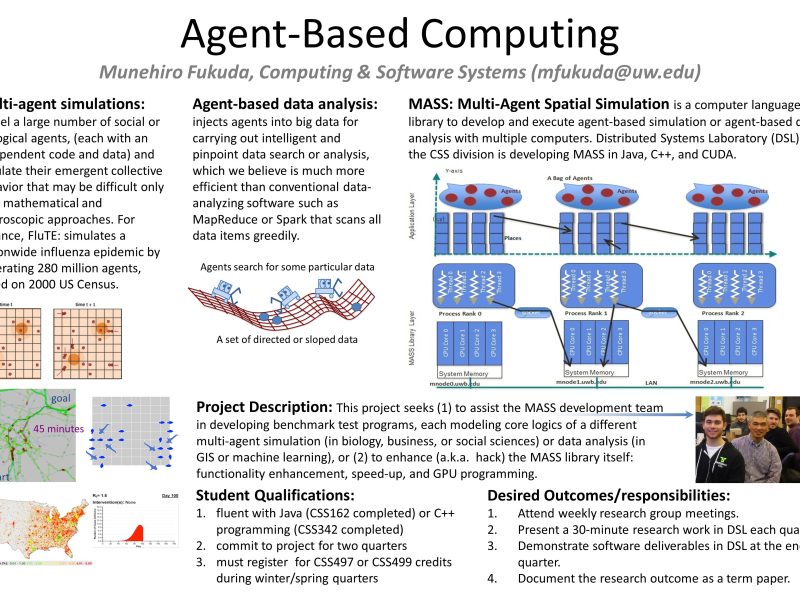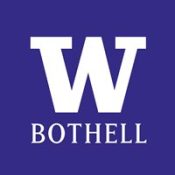Agent-Based Computing

Distributed System Laboratory (DSL) at the CSS Division in STEM School has been working on agent-based modeling (ABM) that observes emergent group behavior of many objects named agents, each with a little knowledge, (i.e., a few data members) and simple behaviors, (i.e., some methods). For instance, consider ants seeking food. While ants may randomly search for food first, once they found food, they emit pheromones on the route to the food, so that other ants follow this chemical to carry more food. DSL is applying ABM to two areas of study: (1) ABM micro-simulations and (2) data discovery using ABM. The former deals with not only ant simulation but also epidemic, traffic, and biological simulations. For instance, FluTE simulates a nationwide influenza epidemic by generating 280 million people agents, based on the 2000 US Census. MATSim simulates rush hours in a given metropolitan area by moving millions of vehicle agents. On the other hand, the latter tries to find some attributes of a big data set with biologically-inspired algorithms. For instance, the grasshopper optimization algorithm randomly populates grasshopper agents over a data set and lets them search for a maximum or a minimum data item rather than scan all data, where the grasshopper’s agents will be gradually getting closer to what they want to search in a swarm.
The problem in ABM is however to populate and simulate a million agents, which cannot be handled with only a single computer. DSL has been developing MASS: Multi-Agent Spatial Simulation library that executes ABM with multiple computers. MASS is now available in Java, C++, and CUDA languages. We are continuously enhancing the MASS library to cover more ABM micro-simulations as well as data science domains using ABM.
Given these activities, DSL is seeking new undergraduate students who can help us with one of the following projects
- ABM micro-simulations: writing benchmark programs in C++ and/or CUDA to measure the programmability and the execution performance of the MASS C++ or MASS Java.
- Data discovery using ABM: developing data science applications with MASS Java to measure the programmability and the execution performance of MASS Java.
- The MASS library enhancement: working with our graduate students to hack the MASS library itself to improve the library.
Student Responsibilities
Attend weekly research group meetings. Present a 30-minute research work in DSL each quarter. Demonstrate software deliverables in DSL at the end of the quarter. Document the research outcome as a term paper.
Student Qualifications
Fluent with Java (CSS143 completed) or C++ programming (CSS342 completed), commit to the project for two quarters, must register for CSS497 or CSS499. (If you have taken either CSS422, 430, 432, or 434, you’ll be able to jump on any of the projects DSL is suggesting, which are not mandatory qualifications, though.)
Commitment
Minimum 2 Quarters.
